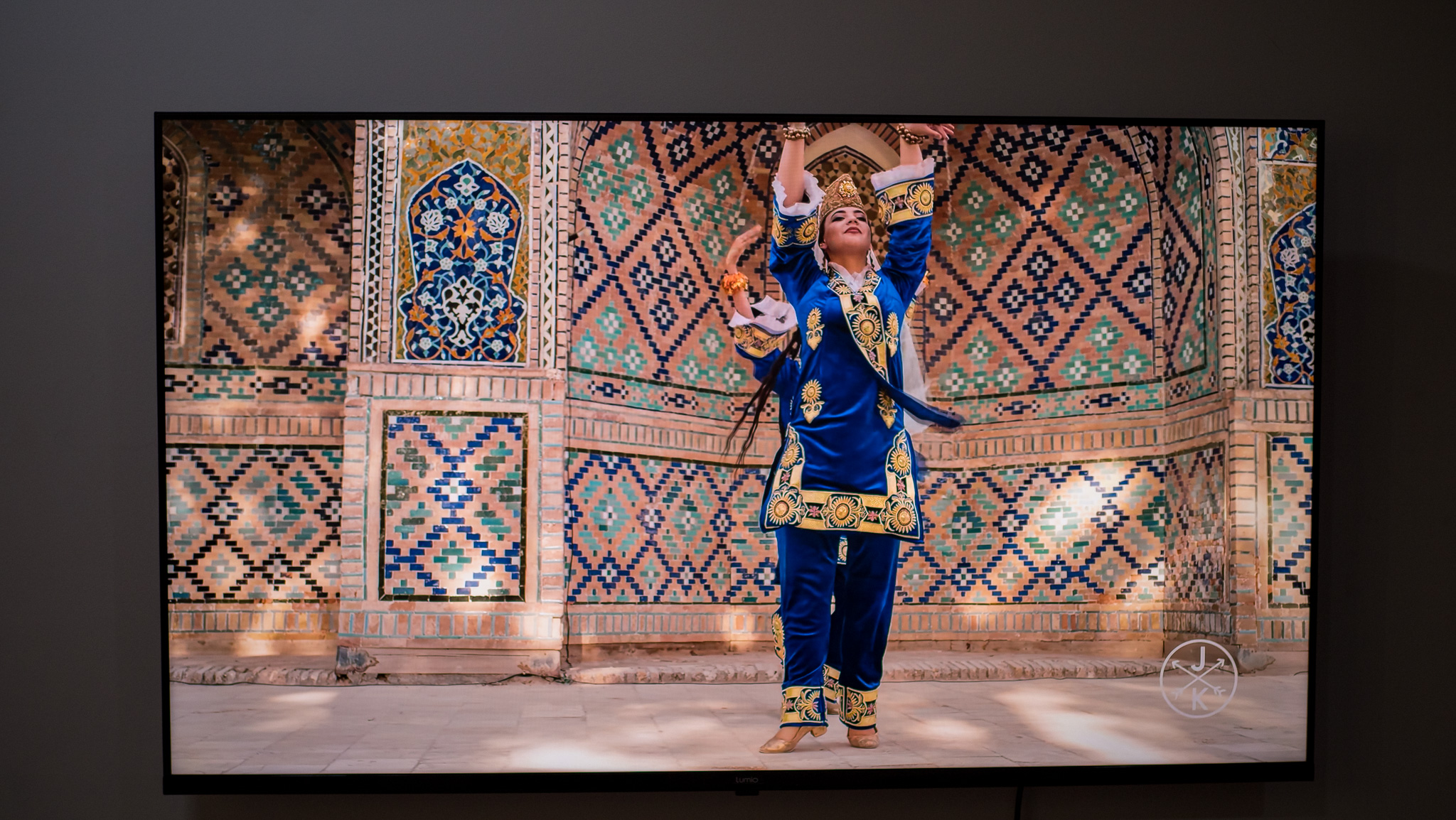Samsung Galaxy S9 vs. Google Pixel 2: Camera comparison

We've compared the broad strokes of how Samsung and Google take very different approaches to making a top-end smartphone. The processes are different, but the end results are very similar: both phones do a whole lot really well, and are worthy leaders in the Android world.
That same thought process follows in their cameras, and there's no surprise that when you talk about taking great photos with a smartphone both the Galaxy S9+ and Google Pixel 2 XL are always in the conversation. But in the end you're only going to buy one of these phones, and if you're using the camera quality as a big deciding factor we have you covered — here's how they differ, and which one is best overall.
Daylight


Galaxy S9+ (left) vs. Google Pixel 2 XL (right) — click to view larger




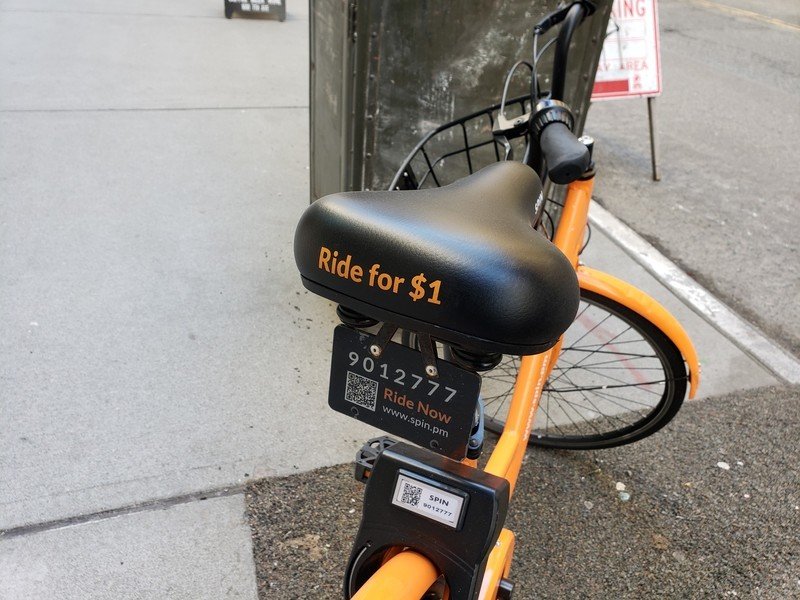





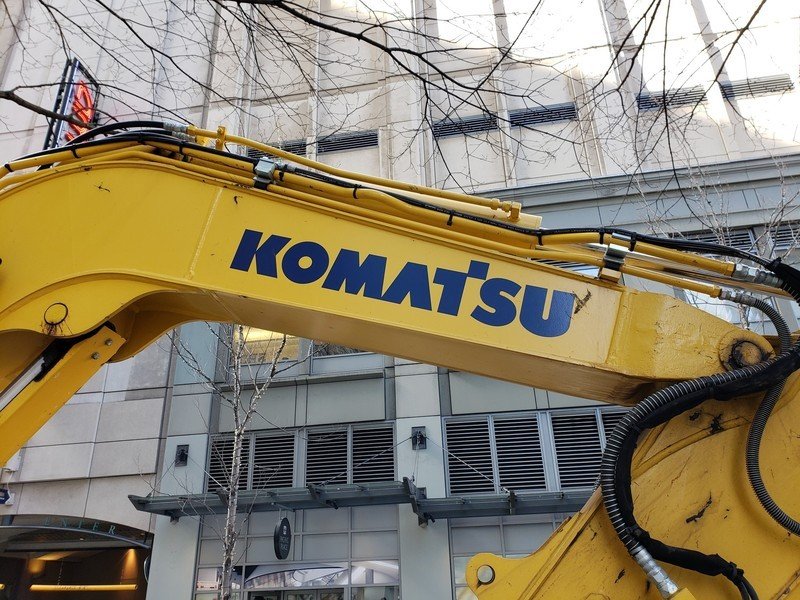

If I didn't put these photos side by side to analyze, you'd be extremely happy with the quality of either one. In good lighting conditions, both cameras are taking really good photos without any clear issues or consistent shortcomings. They're fundamentally sound and never struggle in daylight conditions.
The Galaxy S9+'s shots are far brighter, but the Pixel 2 XL brings out amazing colors and contrast.
Looking right down the line, the biggest differences you can see is that the Galaxy S9+ consistently takes brighter overall photos. Part of that is the f/1.5 lens, but also just comes from the way the phone sets its exposure a bit on the high side. Every photo the Galaxy S9+ takes is brighter across the whole scene, which most people will initially interpret as being a nicer-looking shot. But it comes at the cost of dynamic range and contrast, which is where the Pixel 2 XL takes over — though darker, these shots have deeper colors and a stronger emphasis on widening the range between light and dark parts of the scene. In many cases, it draws out a wider dynamic range than you see in real life.
Looking closer, the Galaxy S9+'s shots have fine details that are extremely crisp, just like the Pixel 2 XL, but where Samsung's camera wins is in the smoothing of noise on flat surfaces. It shows less grain and rough texture, which in most cases is a good thing. Samsung walks the fine line between nicely smoothing and over-processing these flat surfaces, and you could argue that in some cases where you want to accentuate the texture of a subject leaving some noise, as the Pixel 2 XL does, would be preferred.
Low light


Galaxy S9+ (left) vs. Google Pixel 2 XL (right) — click to view larger
Be an expert in 5 minutes
Get the latest news from Android Central, your trusted companion in the world of Android



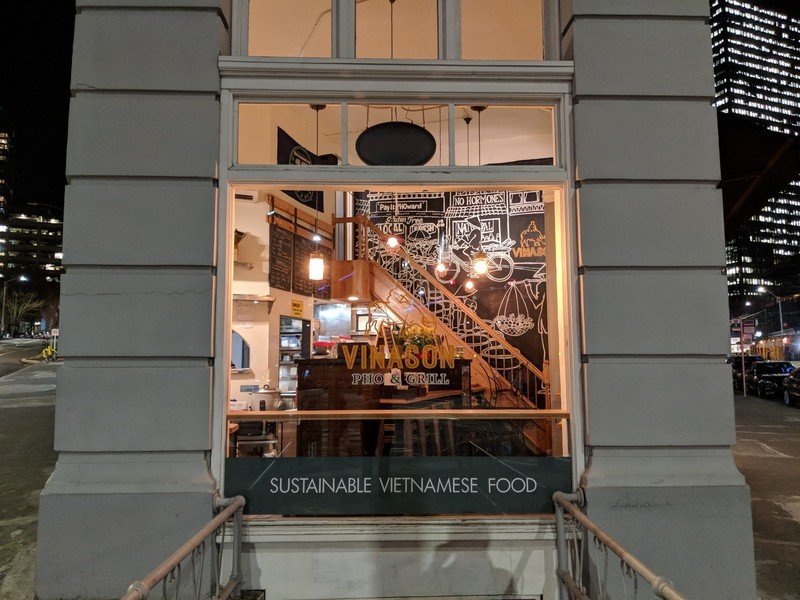



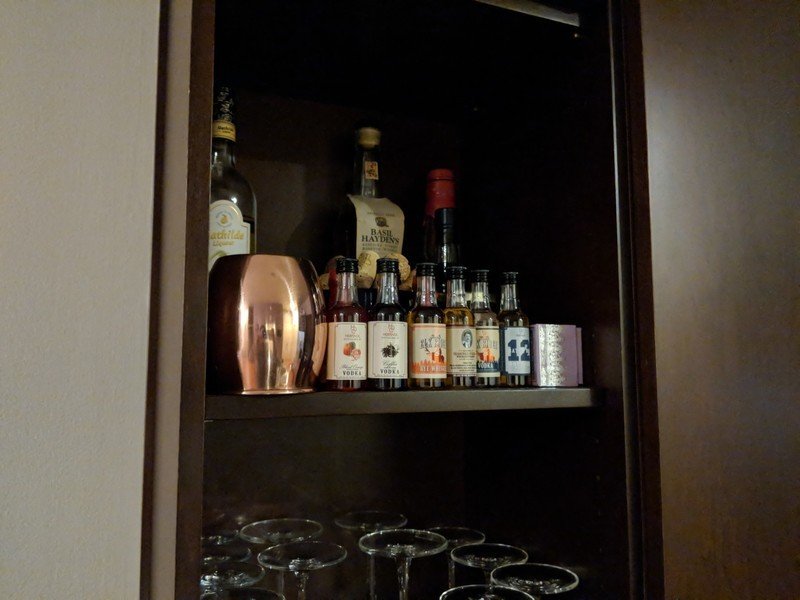




This is where the real battle is: low light photography. Where the GS9+ absolutely wins is in the low noise and sharp detail in these conditions. Zooming in on side-by-side shots, it's a dramatic difference in how smooth the GS9+'s shots are compared to the standard levels of grain you see from the Pixel 2 XL. That's most-noticeable when you pixel peep, but it comes across as a whole when viewed at a "normal" size as the GS9+ photos just have a fantastic clarity and crispness to them you don't expect to see with so little light. Once again Samsung does an excellent job of walking the line between having a crisp photo and one that looks over-processed and smoothed.
The GS9+ is the superior choice for low noise and high clarity low-light shots.
To the Pixel 2 XL's credit, there are many things it does better in low-light situations. Down the line Samsung once again tends to over-expose a bit with the rule of "brighter = better," and its colors and contrast aren't quite as good as the Pixel 2 XL. Just like daylight shots the Google camera pulls out a wider dynamic range than you expect, and in my testing the Pixel 2 XL was also better at accurately setting the white balance to be more neutral while the Galaxy S9+ was regularly too warm. The f/2.0 lens makes it easier to keep close-up subjects in focus, too, where sometimes the GS9+'s f/1.5 lens can give you a soft-looking shot if it focuses slightly off from the point of your subject.
The Galaxy S9+'s f/1.5 lens and new sensor looked good anecdotally in our my review, and now setting its photos side-by-side with the Pixel 2 XL you can see just how good Samsung's camera is doing in weak lighting conditions. The Pixel 2 XL is still fantastic, but in some cases those GS9+ shots make you wish Google's phone had more advanced hardware to work with.
Portrait mode

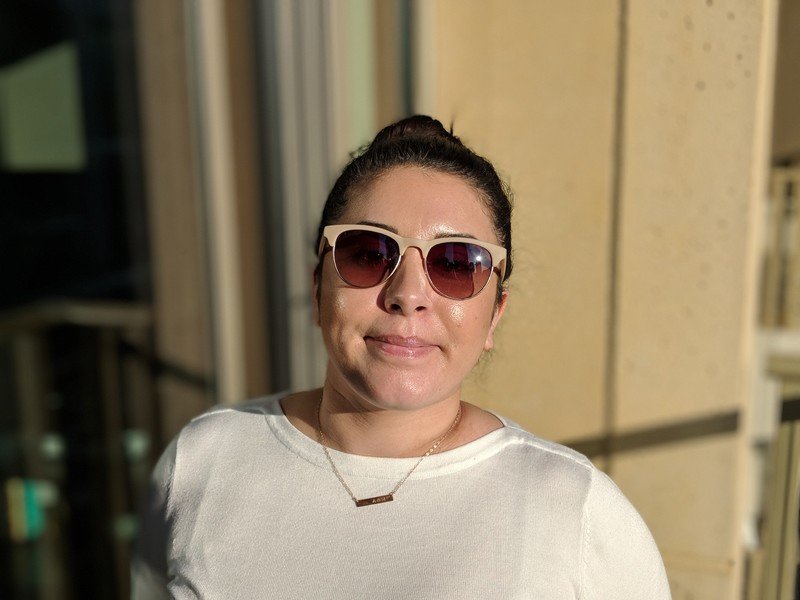
Galaxy S9+ (left) vs. Google Pixel 2 XL (right) — click to view larger


The Galaxy S9+ has a "traditional" (for lack of a better term) portrait mode system, using two lenses to determine depth and selectively apply a background blur for dramatic effect. But even with two lenses and more information to work with, Live Focus seems like the lesser of the two systems overall. It's far pickier about how far away you are from your subject (stated as "3 to 5 feet"), and its processing often struggles to handle irregularities in the subject matter with jarring aberrations in areas it incorrectly thinks are in the foreground or background.
The Pixel 2 XL is better at portrait mode shots, but neither one does particularly well compared to a "regular" photo.
The Pixel 2 XL does its blurring entirely in software, showing that it is possible to get a good portrait mode without the assistance of a second camera as I found it bests the Galaxy S9+ in this area. Google's camera is far more willing to take a Portrait shot at a variety of distances, though my one knock on the interface is its lack of transparency about whether it's truly locked in a Portrait shot or dropped back to a regular photo. The results, however, are better than Samsung's, with more consistent accurate blurring of the background and fewer instances of jagged edges or incorrectly-placed blur.
The one thing throwing a wrench into this whole portrait comparison is that the Galaxy S9+'s main camera is capable of taking some fantastic shallow depth of field shots simply using its main f/1.5 lens. Because of that extremely wide aperture, portraits and macro shots taken in pure Auto mode can often have better background blurring than either Samsung's Live Focus or Google's Portrait mode can offer in the first place. Certainly something to consider here.
Zoom

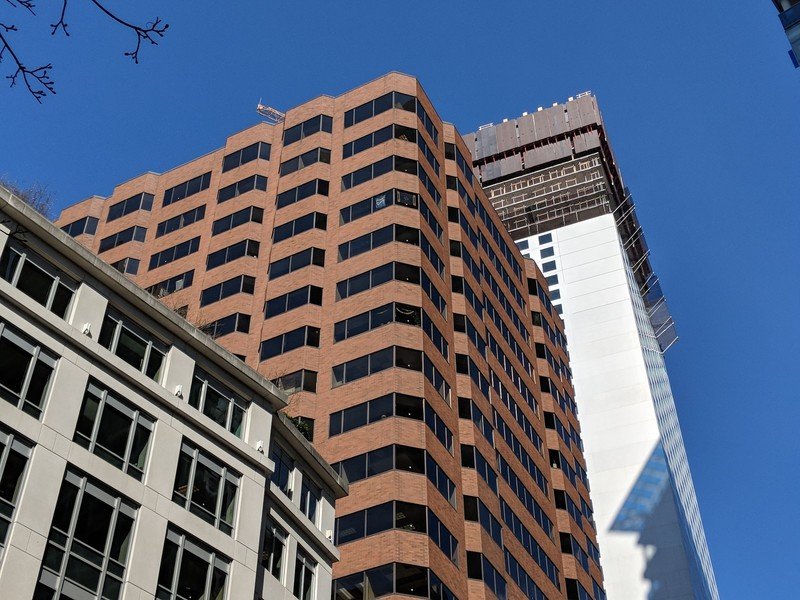
2X zoom: Galaxy S9+ (left) vs. Google Pixel 2 XL (right) — click to view larger

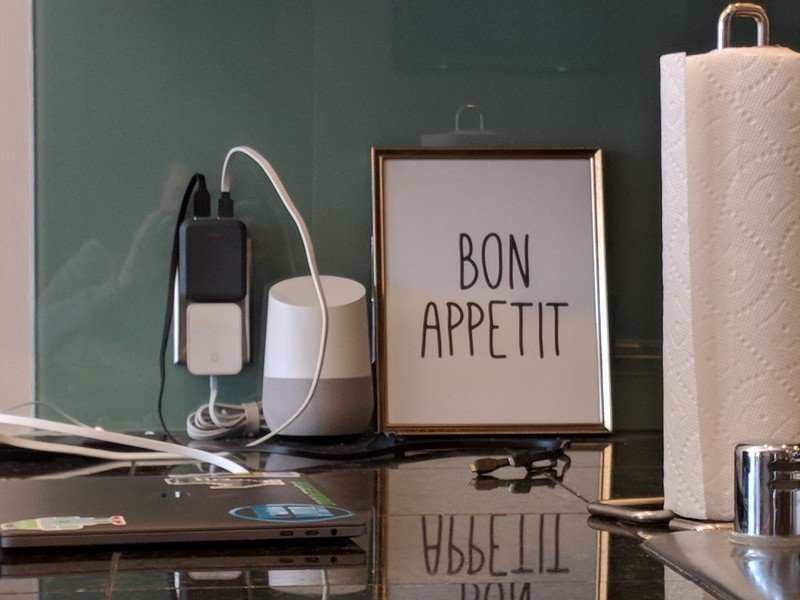
4X zoom: Galaxy S9+ (left) vs. Google Pixel 2 XL (right) — click to view larger
The one place the Galaxy S9+ should be better is in zooming, where it secondary 2X lens gives it the physical advantage of delaying the point where it has to digitally crop on the sensor to "zoom" in. But interestingly, the Galaxy S9+ doesn't actually use the secondary camera every time you zoom to 2X and beyond — in weaker lighting conditions, it falls back to using a digital crop on the main camera like the Pixel 2 XL. In many cases the main camera will actually provide better photos than the secondary because it's using a better sensor and brighter lens, so it seems Samsung has that dialed in well.
At 2X, it's basically a tie — beyond that, the Galaxy S9+'s optics win.
In the above examples we see the Galaxy S9+'s second camera in use, and can compare that to the Pixel 2 XL's purely digital zoom. In daylight at the 2X zoom level things are roughly the same, which is a nice accomplishment from the Pixel 2 XL's perspective — at 2X, it's basically indistinguishable from having an "optical" zoom from the Galaxy S9+'s switching lenses. And things are even closer in mixed-light situations where the Galaxy S9+ also drops to a digital crop on the main sensor.
But at 4X, you see where the Galaxy S9+ has the advantage. Working from a starting point of using a 2X lens and digitally cropping from there, the GS9+'s shot is dramatically more sharp and clear. It's at this zoom level that the Pixel 2 XL's camera really looks like a poor digital crop, and that's not surprising — at some point it doesn't matter how you process things, because you just run out of resolution to work with.
Bottom line: Which one is best?
After all of that, which phone takes the best photos? Well of course, there's some nuance at play here.
Looking at daylight photos, I give the edge to the Pixel 2 XL. The amazing amount of color, great contrast and super-wide dynamic range lead to stunning photos with great consistency from shot to shot, and Samsung's only real answer to that is to just take brighter photos with slightly better noise reduction. The Galaxy S9+ takes great photos outdoors, but they are rarely mind-blowing in the same way the Pixel 2 XL's are.
The Pixel 2 XL is best when it has light to work, but the Galaxy S9+ is the new king of low light.
When it comes to low light, things are close but I give the nod to the Galaxy S9+ overall. Every single low-light shot with that main sensor and f/1.5 lens is smoother, sharper and clearer than what the Pixel 2 XL captures, and when it comes to low-light shots those things are far more noticeable than the Pixel 2 XL's better colors and white balance. But just like the daylight shots, this is close — perhaps you put more emphasis on colors and are willing to take an acceptable amount of low-light noise to get it, especially if you aren't showing off the images at large sizes.
Then we have zoom and portrait mode, which cancel each other out in my eyes. The Galaxy S9+'s secondary camera provides superior zoom at anything beyond 2X, and Google's digital crop isn't particularly close. But interestingly Samsung does a worse job with portrait mode shots than Google does — go figure. Now if you're comparing the smaller (and less expensive) Galaxy S9 and Pixel 2, things are different. The Galaxy S9 only has one camera, so it doesn't offer the optical 2X zoom or portrait mode, which then throws this portion in Google's favor.
Count it up, and you have ... basically a tie, depending on the kinds of photos you take most often. The Pixel 2 XL does a better job in any situation where it has light to work with, creating fantastic photos that are so good you won't think about editing them before sending out online or to your friends and family — but at night, it's no longer the best camera out there. The Galaxy S9+ is the king when the lights get low, with amazing clarity and low noise you just can't get anywhere else right now — the trade-off there is that its daylight shots don't rise to the same level. Choose where you want your camera to do its best work, and that's the phone you want.
Andrew was an Executive Editor, U.S. at Android Central between 2012 and 2020.

